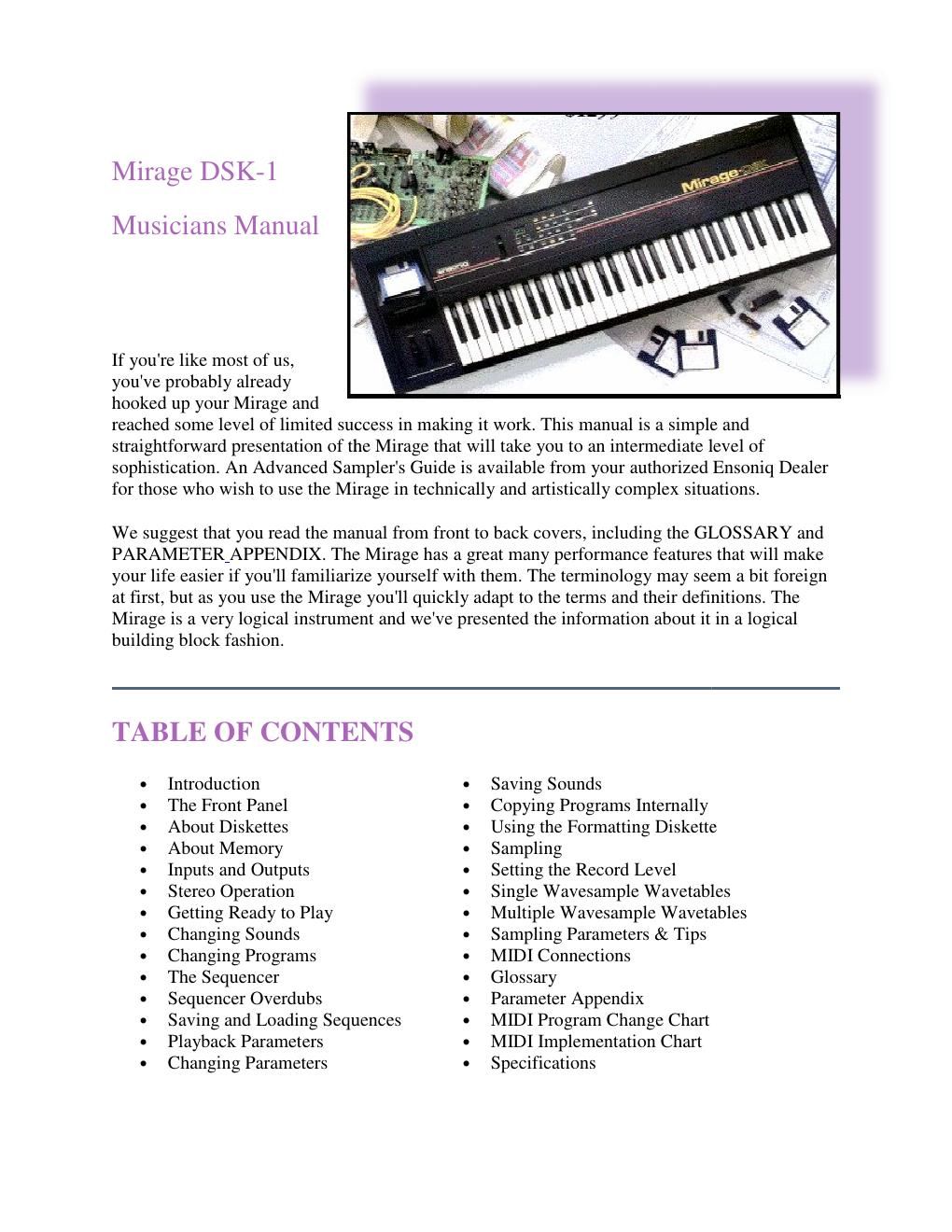Ensoniq mirage owner manual
This is the 62 pages manual for ensoniq mirage owner manual.
Read or download the pdf for free. If you want to contribute, please upload pdfs to audioservicemanuals.wetransfer.com.
Page: 1 / 62
